Armchair Engineering Some Drupal Talks about AI

I am not a Drupal developer and I never work with it. However, Bob works with Drupal all the time and I thought I'd cover some of the talks he didn't get a chance to see at MidCamp.
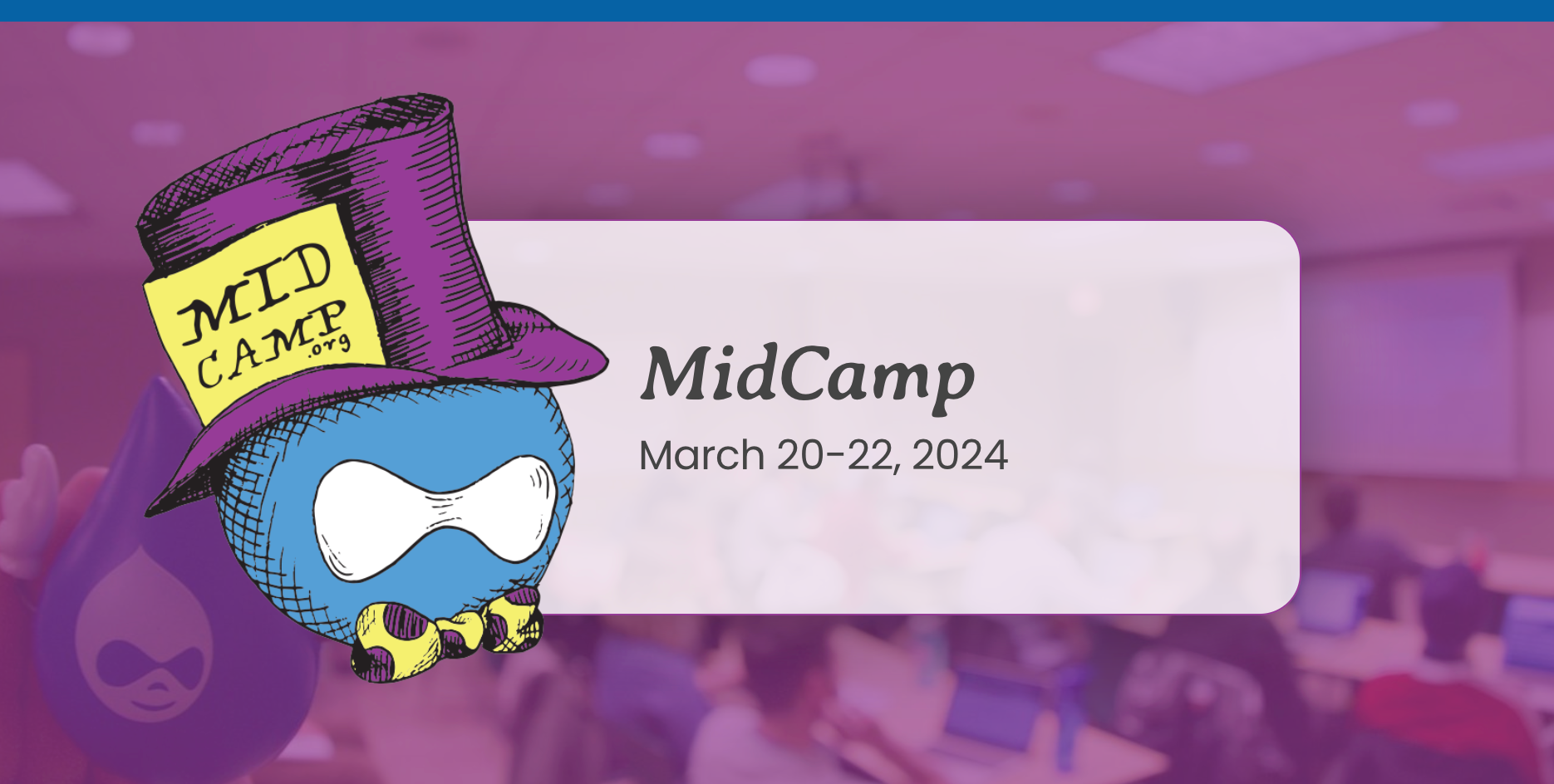
Midwest Drupal Camp (MidCamp) just happened, and it's an annual event for the Drupal framework. Drupal is a framework for developing websites.
I'm not a Drupal developer but there are concepts that transfer over between any language or framework when it comes to some of the new AI technologies that are becoming more popular.
There were 4 talks that seemed to be AI related, and I thought I'd go over each one and give the short version of them while explaining concepts rather than too much detail. While also adding some other news intermixed that's related.

Randy Oest Creative Director at Four Kitchens
Randy went over what Four Kitchens built for Yale University. It was hosted at ask.yale.edu and looks something like this:
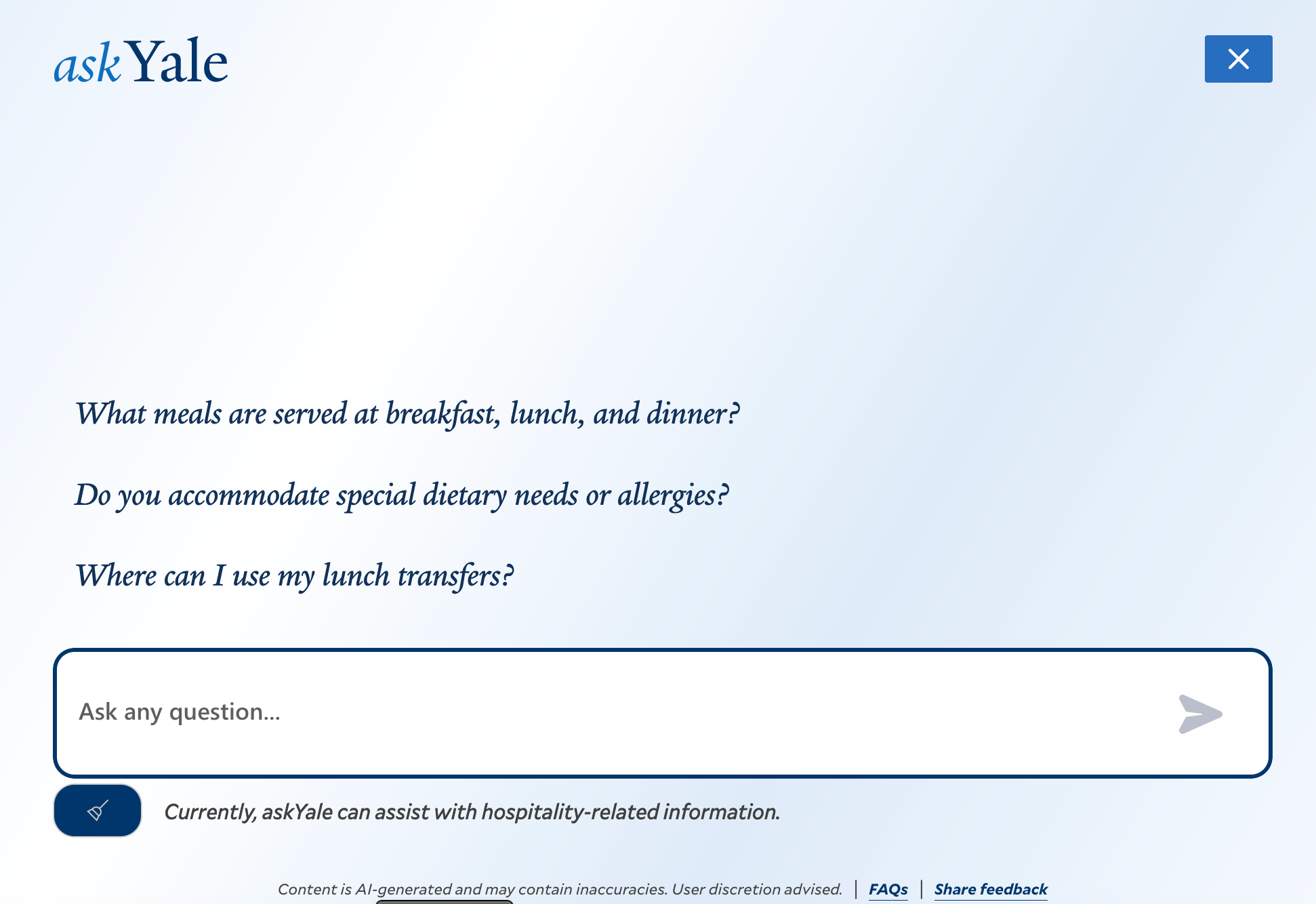
Yale approached them with a proof of concept they had running on Azure OpenAI Studio. Yale had a special message for Four Kitchens to create with AI and Randy likened it to the space race and JFK asking congress to make going to space a priority.
All-in-all they spent roughly 5 weeks with 3 people from Four Kitchens and 2 people from Yale working on this project. He guesstimated 32 hours per person per week.
They used:
Which is a react app and they dropped it into a custom block within Drupal.
Defined successful launch as:
Webpage to show AI search at custom domain
Conversational tone of the chat interface that should have a personality
Data from Yale Hospitality Drupal website
Way to drop this in to any Drupal site that was YaleSites
Challenges:
First big AI project.
Prompts are not deterministic.
Poorly structured content resulted in wrong results.
Fun challenge to get tone and conversational
They “red teamed” the chat interface. Try to exploit the AI for problems.
It seems to me that they built was a RAG, which is short for Retrieval-Augmented Generation. Although, it was emphasized as AI powered search during the talk.
An interesting insight:
Things that make it more readable for a person will also make it easier for AI, using headings and lists. Content strategy practice has started to adopt AI as a user of content.
Randy compared launching to photo-shoot of clothing on fashion models to look great for photography and not that it fits great on person. Compared clips holding clothing on model to there being proverbial clips on their launch to hold things in place. Throughout this talk Randy wanted to emphasize the exploratory effort and ancillary benefits could come to YaleSites from understanding gained on this initial AI project.
One thing I noticed was that they relied heavily on Azure and OpenAI. I thought it was worth adding that there is a way to get free credits for people who have small and relatively new companies. You can apply over at Microsoft's website:
Now one of the interesting parts of the talk that perked my ears up was that they "red teamed" the chat interface and the ethics were "weirdly easy to solve".
So I thought it would be interesting to test out some prompts to circumvent their guardrails. You can check it out here in this separate post that explains it in more detail.
Vincenzo Gambino Drupal Developer from London, UK with 14 years of experience
Vincenzo gives a good primer that is more exhaustively detailed - in a good way. He gives very solid definitions and explaining of the basics, while also recapping how we got here over the last 14 months after the explosion of ChatGPT making people see the potentials of a new technology.
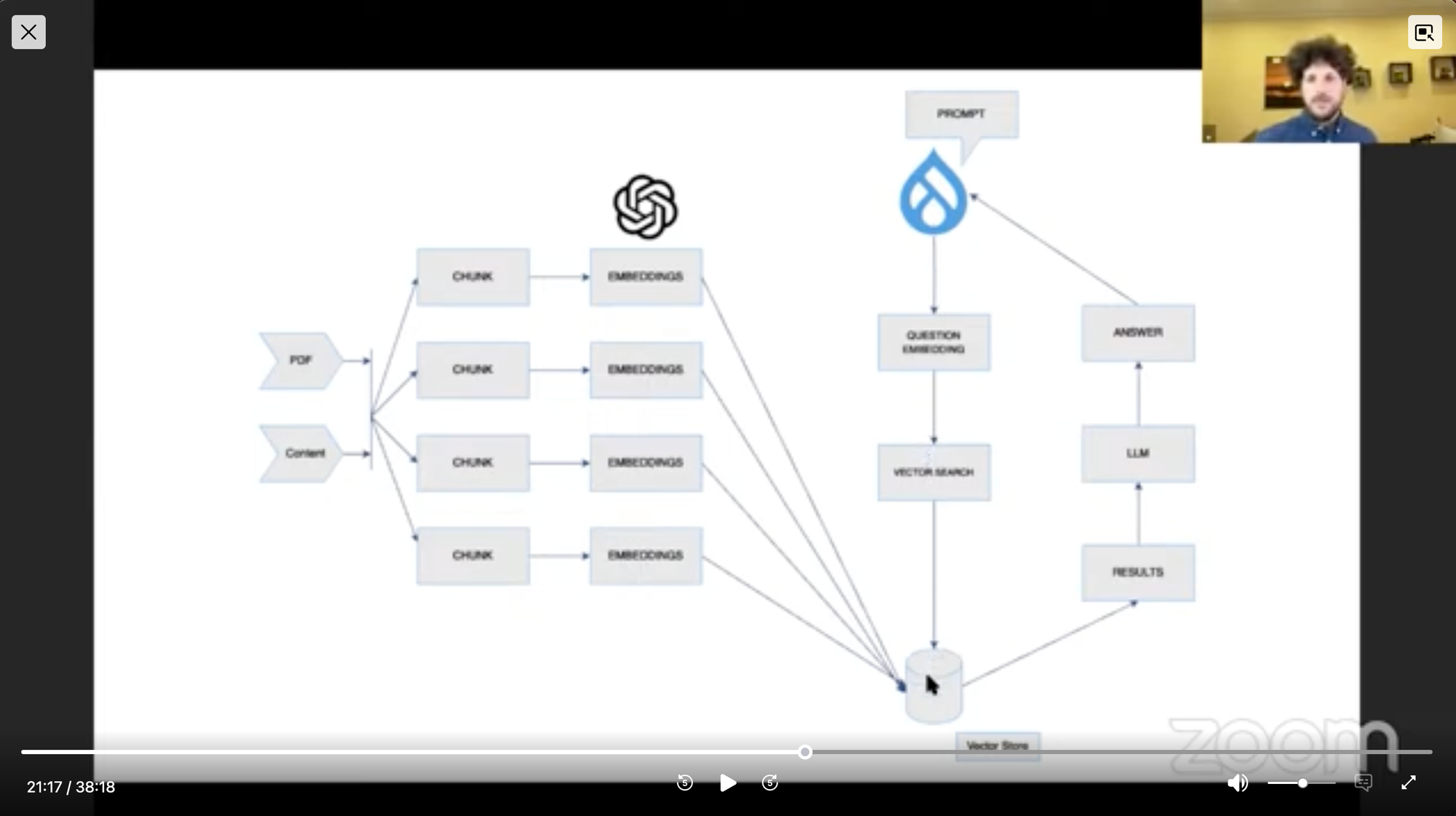
You can think of RAG as a way to have a knowledge-base that is part of your communication with a non-deterministic LLM. Examples I think of when thinking about a RAG app:
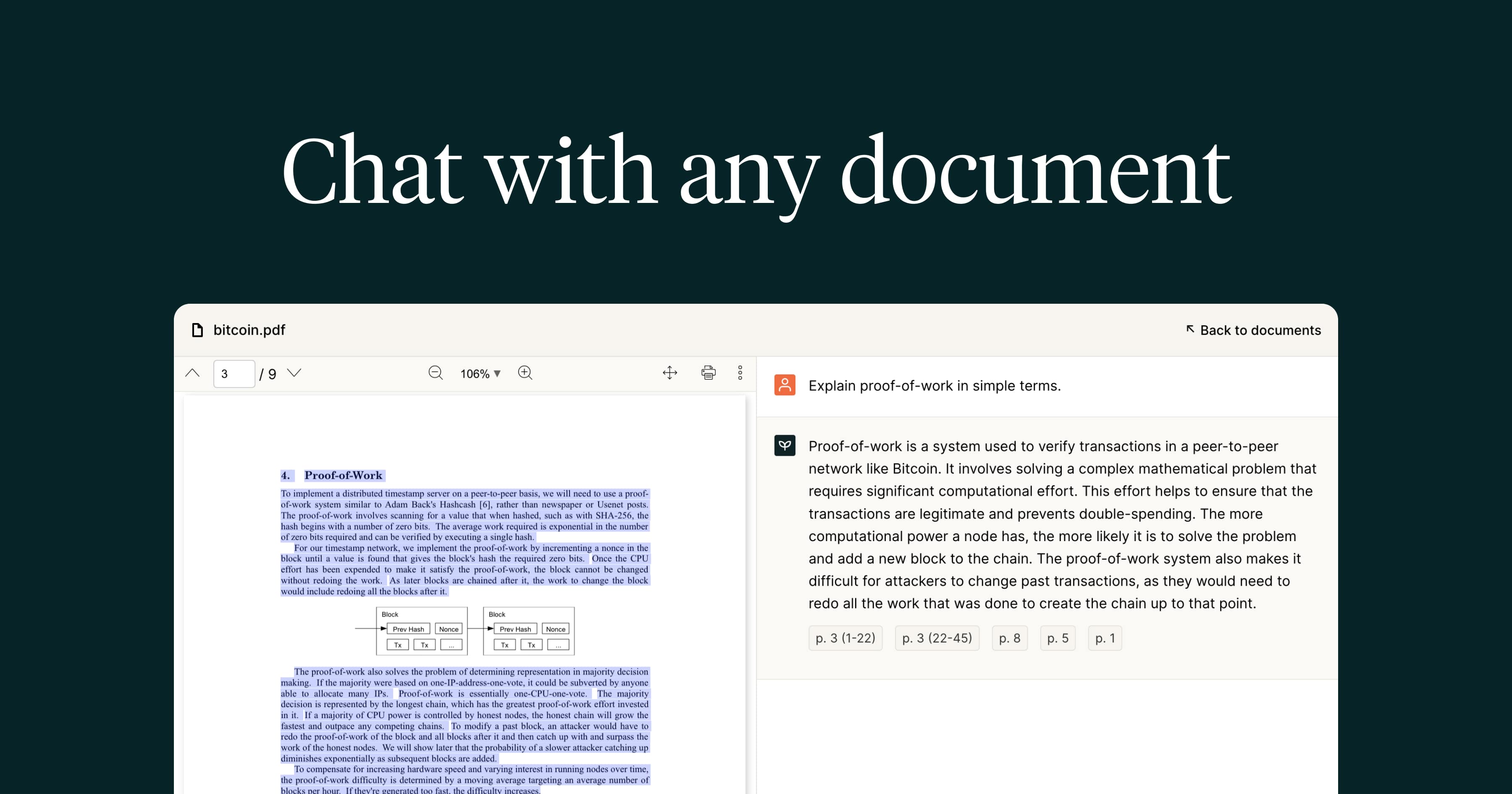
Have a chat with your documents. This is a simple but incredibly powerful feature.

It's worth breaking down some concepts and showing some good visualizations to kind of gain an intuition about what is going on. I stumbled across this video online that does a fairly good job of explaining very succinctly.
Short form video from this channel https://www.youtube.com/@3blue1brown
Embeddings
An embedding is a vector (list) of floating point numbers. The distance between two vectors measures their relatedness. Small distances suggest high relatedness and large distances suggest low relatedness.
-Search (where results are ranked by relevance to a query string)
-Recommendations (where items with related text strings are recommended)
-Classification (where text strings are classified by their most similar label)
Vincenzo uses OpenAI tools to convert files and text into embeddings that then get stored within a managed vector database service like Pinecone.
I believe you can also use pgvector as an open-source alternative.
Within Drupal ecosystem it seems that they refer to dependencies as modules. The talk covers sub-modules from this module:

Walks through how to setup in Drupal 10:
composer require 'drupal/openai:^1.0@beta'Then run:
drush en openai -yGo and make OpenAI account and generate API key.
CKEditor Submodule
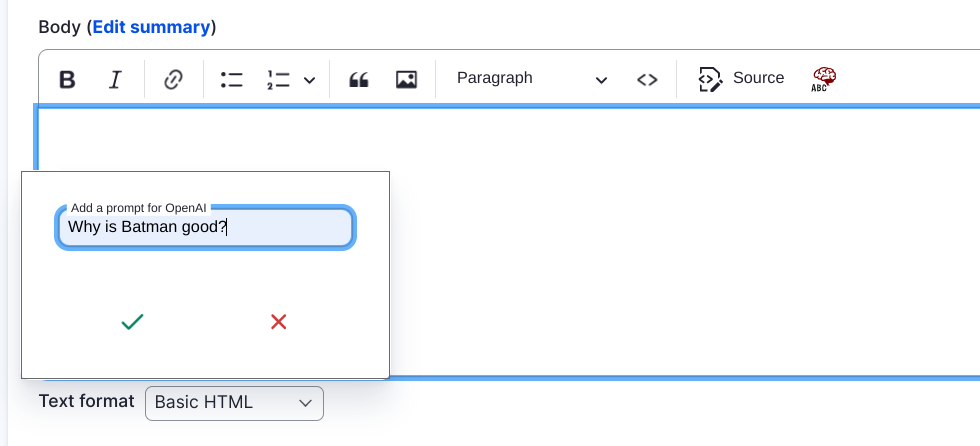

drush en openai_ckeditor -yOpenAI Content Tools Submodule
This sub module provides Changing tone, Summarise and Suggest taxonomy functionality.
Extend OpenAI Module
That uses the openai-php/client package.
ChatGPT Content Assistance Module
Create Content, Translate Content, and Create Images
Vincenzo shows quite a bit of what's possible and the last 15 minutes of his talk are worth a watch just to see the demos.
Jeff McWherter, Chief Operating Officer, from Gravity Works
Jeff gives a good talk with new insights I hadn't thought about before. As any talk about the ethics of a new technology, it usually does have a cynical and negative somewhat outlook. I appreciated his talk and he helps point out important things to keep in mind of how machine learning models can go awry.
Bias
Prompt about “two developers at drupal midcamp looking at a computer” for text to image.
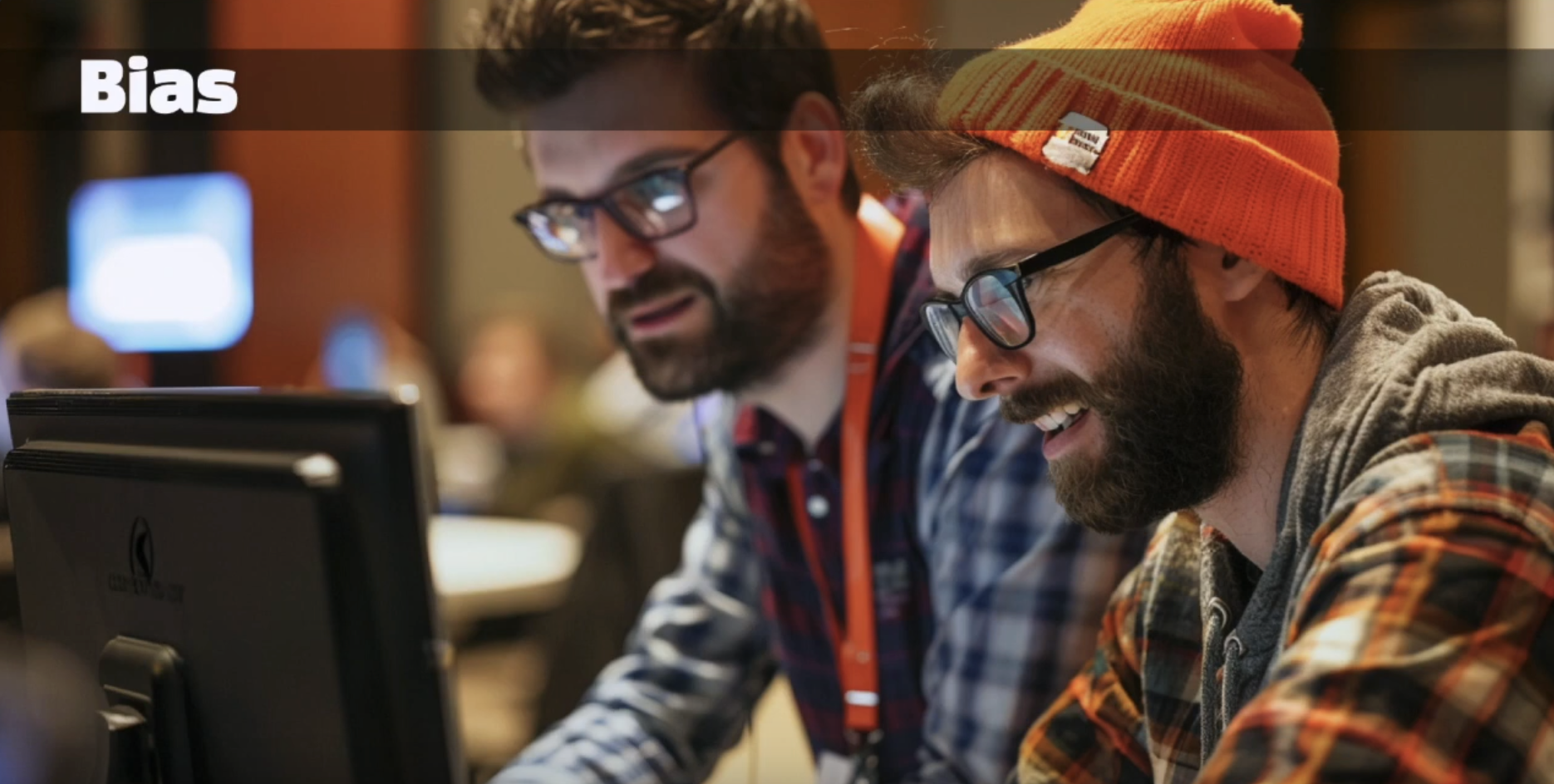
Amazon ethical issue of internal hiring tool discriminated against women and it was quickly pulled. There’s more men in IT that get jobs therefore men are better fit is what the data says.

This wasn't mentioned within Jeff's talk, but I feel like it's worth mentioning how in one model it was found to have phallocentricity:
The central node of ChatGPT’s signifying network is… the phallus.
— the future lasts forever (@pourfairelevide) February 24, 2024
Lacan remains unbeaten. Nobody tell Zizek about this. pic.twitter.com/7hBXfKdiih
This makes you wonder about why that is and where that comes from. What's going on here?
Transparency
If AI is making a decision about your life, you should have an explanation. Why didn’t you get the job? That gets tough. Black Box Models. Transparency about the process and criteria.
Fairwashing
Concept first created in paper around 2019, the idea of a company designs the brain of computer keeps it hidden and claims it is fair.
Digital Epidermalization
That projected information onto the body. Facial recognition is optimized for Caucasian people. It’s the machine telling you that you’re strange. People assume that the machines are neutral but the machines are not neutral.
The term "epidermalization" in the context of discrimination refers to a concept from Frantz Fanon, a French West Indian psychiatrist and political philosopher, particularly known for his works on the psychopathology of colonization and the human, social, and cultural consequences of decolonization. In his influential book, "Black Skin, White Masks" (1952), Fanon uses the term "epidermalization" to describe the way racial identity is ascribed to individuals based purely on skin color, ingraining social and psychological hierarchies based on race.
Fanon discusses how the social, political, and economic circumstances associated with colonialism imprint a racial identity on the colonized, reducing their self-perception and societal perception to their skin color. This "epidermalization of inferiority" means that racial distinctions are deeply embedded as inherent characteristics, affecting how individuals perceive themselves and are perceived by others. This concept helps to explain the deep-seated nature of racial biases and the profound psychological impacts of racism.
Data Flattening Problem
Robots stealing from artists.
To the point that Jeff is making:
with all the Sora stuff happening right now,
— Frog_Glasses (@Frog_spectacles) February 19, 2024
I feel like I spent 20 years of my life swimming suddenly they let motorboats into the Olympics. pic.twitter.com/yChVRjcSgS
Distribution of Wealth
500 billion of new household wealth by 2045, but where is it going?
Jeff mentioned that Sam Altman, CEO of OpenAI, is a Georgist. He was paying people for their bio-metric data. He pays them in crypto. It's a strange activity and doesn't exactly instill trust.

I had to lookup what a Georgist is exactly.
But he remains keenly interested in politics. Altman’s beliefs are shaped by the theories of late 19th century political economist Henry George, who combined a belief in the power of market incentives to deliver increasing prosperity with a disdain for those who speculate on scarce assets, like land, instead of investing their capital in human progress. Altman has advocated for a land-value tax—a classic Georgist policy—in recent meetings with world leaders, he says.

Being a Georgist sounds noble, but so did being an Effective Altruist at one point.
Environmental Problem
Cost to train and cost to inference in terms of energy. Basically, this is data center costs.
To Jeff's point, Amazon just recently bought a new data center that is nuclear powered:

The Alignment Problem of AI
“When people talk about ethical AI, instead of talking about Skynet; we should think about working conditions, climate change, and how to make the economy serve humans rather than the other way around.”
Martin Anderson-Clutz, Senior Solutions Engineer at Acquia
Martin gave a detailed talk as well, giving good definitions and interesting opinions. However, I will not be repeating some of the repeated topics due to trying to keep this more concise. I will be highlighting insights from his talk.

He casually asked whether or not they felt worried about losing their job and then cited the following joke:
In order to replace developers, customers will need to clearly state their requirements.
To Martin's point, there was Devin AI that came out with a very popular demo video showing off "the first AI Software Engineer" completing work on a freelancing site:

but it was quickly debunked as more hype than reality:
Modules
Augmenter AI ← works with other large language models, augmenters as configuration entities works with Drupal 9 and 10
AI Interpolator ← Designed to work in the back end, generating field values. No creator widgets. Lots of service integrations.
During the Q and A
Towards the end of his talk, Martin briefly mentioned the idea of using a RAG as a “source” engine for writing content. I thought that was a pretty good idea and worth highlighting. Since many of the tools within these talks were about making content go on websites and they still require a human-in-the-loop.




.png)